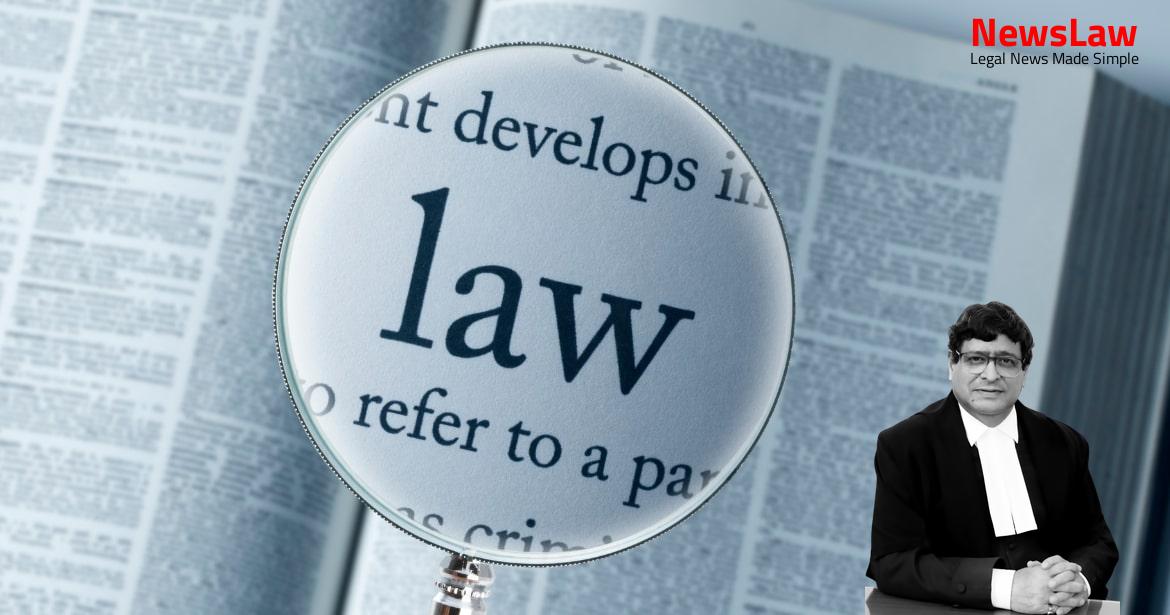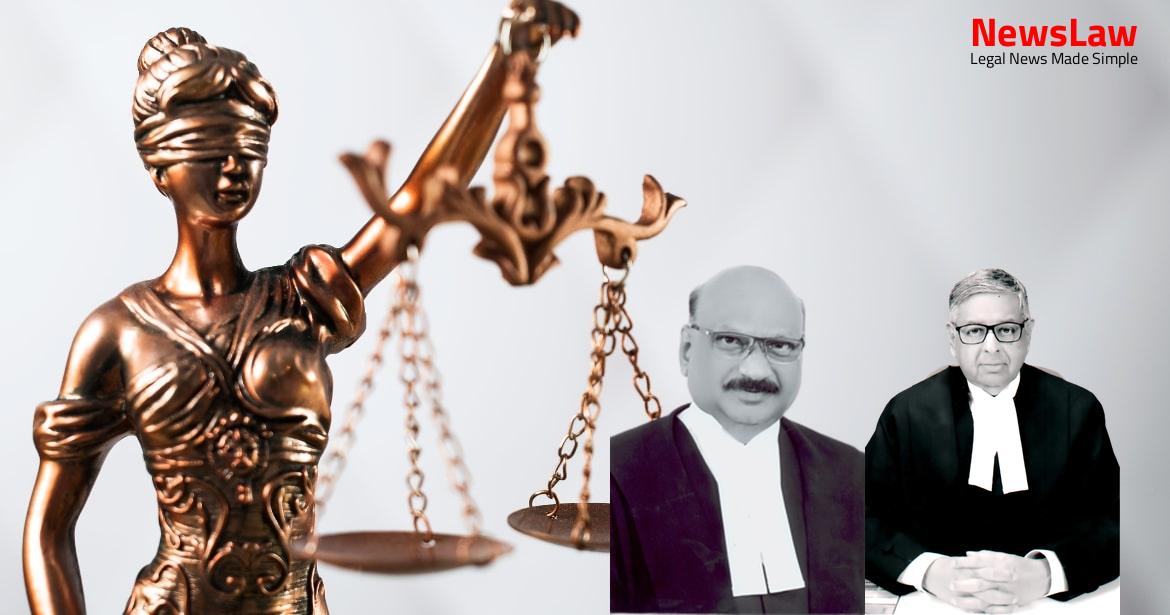The case of Mahadevappa Natikar v. State of Karnataka involves the appeal challenging the judgment passed by the High Court confirming the conviction and sentence of accused persons under various sections of the Indian Penal Code. The incident leading to the case occurred on 18 February, 2009 involving Mahadevappa Natikar as the deceased and the appellants as the accused. The legal proceedings revolve around the actions and intent of the appellants in the alleged assault resulting in Mahadevappa’s death.
Facts
- The present appeal challenges the judgment and order dated 20 April, 2011 passed by the High Court of Karnataka.
- The High Court confirmed the conviction and sentence of the Trial Court in Sessions Case No.213/2009 convicting appellants (accused Nos. 1, 2 and 4) under Section 302 of IPC and sentencing them to life imprisonment.
- The High Court also upheld the conviction and sentence of appellant Nos.1 and 3 (accused No 2 & 4) under Sections 324 and 326 of IPC.
- First Information Report No.18/2009 was lodged against the accused persons for various offences under Indian Penal Code.
- The incident occurred on 18 February, 2009 at 7.00 a.m. based on the complaint submitted by Kumari Sangeeta D/o Mahadevappa Natikar.
- The High Court of Karnataka upheld and confirmed the order of the Trial Court.
- Subhash and other family members assaulted Mahadevappa with a stick on his forehead and face, causing grievous injuries.
- Dattatrey attacked Mahadevappa’s forehead and head with a chopper, causing grievous injuries.
- Digambar threw a stone below Mahadevappa’s right knee, resulting in grievous blood injuries, and then hit him on the face with a stone.
- Sangeeta, Sharanappa, and mother witnessed the attack on Mahadevappa. Sharanappa, Sangeeta’s brother, tried to intervene but was attacked by Digambar and injured on his hand and palm.
- Residents in the area rushed to the scene upon hearing the commotion.
- Mahadevappa was brought to the house unconscious due to the severe injuries and was later admitted to a hospital but was declared dead by the doctors.
- The accused were charged and pleaded not guilty, leading to a trial where they were convicted and sentenced for various offences under the Indian Penal Code.
- Accused 2 and 4 were sentenced to life imprisonment and fines, while accused 3, 5, and 6 received different sentences for their respective offences.
- Accused 2 and 4 also faced additional sentencing for other offences.
- Accused 3, 5, and 6 accepted the judgment, while accused 1, 2, and 4 appealed to the High Court.
- Sangeeta, after the incident, returned home and confronted her uncle Subhash about the blocked pathway, leading to a verbal altercation.
- The incident was preceded by a day where firewood was dumped on the pathway by Sangeeta’s uncle, causing the blockage.
- When Sangeeta tried to clear the pathway, she found it covered with firewood, as her family members had already left for the fields.
Arguments
- Learned counsel for the appellants argues that the evidence collected by the prosecution indicates the incident was a reaction to provocation by the deceased and his family.
- Intent of the appellants is not proven by the prosecution.
- The act of the appellants may not meet the criteria for Section 302 of the Indian Penal Code, instead suggesting it could be categorized as an offense under Section 304 part 2 of the Indian Penal Code.
- The accused’s actions, verbal altercation, and provocation by the deceased and his family prompted the appellants to claim exercising their right to private defense.
- The appellants’ counsel asserts that even if the prosecution proved the death of the deceased and the presence and involvement of the appellants, the evidence suggests it was the deceased who initiated the confrontation by coming to the accused’s house and engaging in a verbal exchange.
- The appellants’ actions are portrayed as a response to provocation by the deceased and his family rather than premeditated intention.
- Learned counsel representing the State of Karnataka supported the judgment and order passed by the High Court of Karnataka.
- The State’s counsel upheld the judgment and order of the Sessions Court.
- There was alignment between the State’s counsel and the decisions of both the High Court and Sessions Court.
Analysis
- The evidence clearly shows that there was a dispute on account of the way on 18.02.2009 leading to a quarrel between Sangeeta and accused No.2 initially and then accused No.1 and 3 abused Sangeeta.
- The High Court referred to the judgment in the case of Darshan Singh v. State of Punjab and Another regarding the exercise of the right of private defense.
- Accused No.2 assaulted Mahadevappa on the head and forehead with a dangerous weapon, a chopper (koita).
- The witnesses and medical reports confirm the injuries suffered by the victim Mahadevappa and the actions of each accused during the incident.
- The presence and active role of the accused in causing the death of Mahadevappa are supported by witness testimonies and medical examinations.
- The prosecution argued that the accused acted in self-defense, but the evidence presented did not support this claim.
- The injuries inflicted on Mahadevappa were severe and ultimately led to his death, indicating the intention to cause harm.
- The witnesses, including family members of the deceased, provided consistent testimonies about the events leading to Mahadevappa’s death.
- The basic principle underlying the doctrine of right of private defence is highlighted.
- Individuals are entitled to protect themselves and their property when faced with danger and immediate aid from the State is not available.
- This right is based on the need for self-protection in the absence of immediate State assistance.
- Enquiry into intention of inflicting the injury
- Considering intention to strike vital or dangerous spot
- Considering force used to cause injury
- Not necessary to inquire into every anatomical detail
- Avoiding excessive focus on specific bodily organs
- The intention to cause bodily injury is key in determining guilt for murder.
- Once intention for bodily injury is proven, the enquiry becomes purely objective.
- Objective inference is used to determine if the injury is sufficient to cause death.
- Inflicting injuries that are likely to cause death holds consequences.
- Intent to cause injury that could lead to death also constitutes guilt for murder.
- Accidental or unintentional injuries may provide an escape from guilt if proven.
Decision
- The High Court of Karnataka did not commit any error in upholding the judgment of the Trial Court/Sessions Court.
- There are no grounds for interference with the decision.
- The appeal has failed and is dismissed.
- The appellants must surrender before the Trial Court within four weeks.
- The order from this Court granting bail to the appellants is recalled.
Case Title: SUBHASH @ SUBANNA Vs. STATE OF KARNATAKAMINISTRY OF HOME AFFAIRS (2024 INSC 294)
Case Number: Crl.A. No.-000328-000328 / 2012



